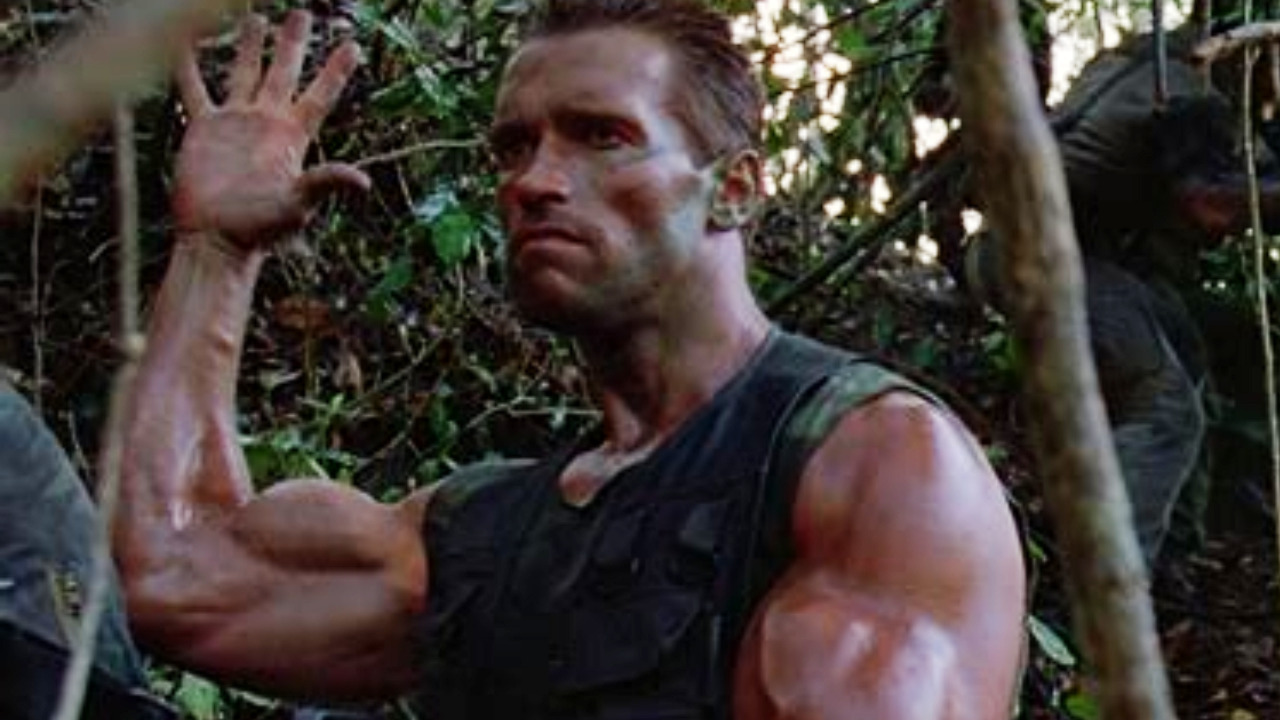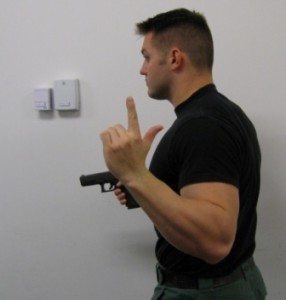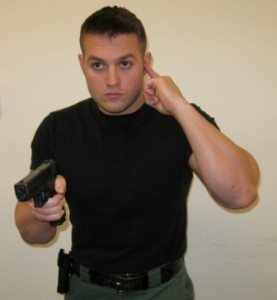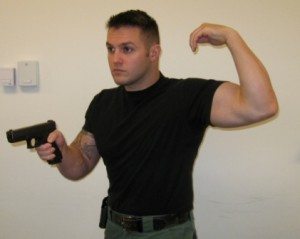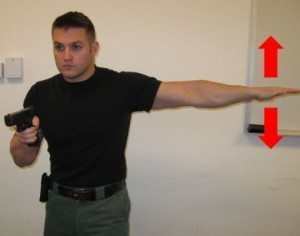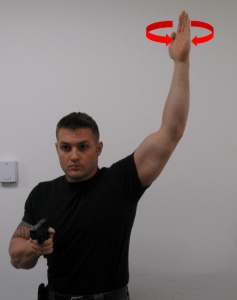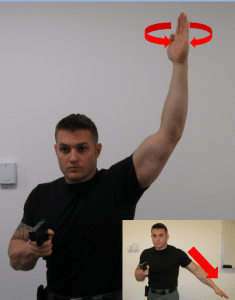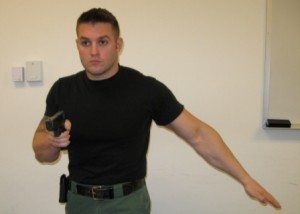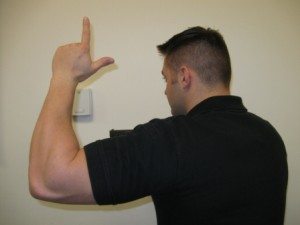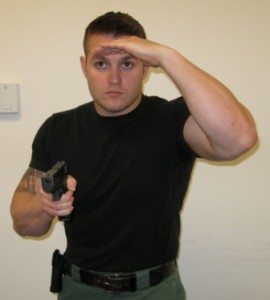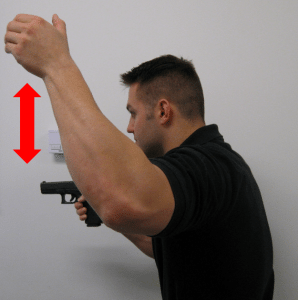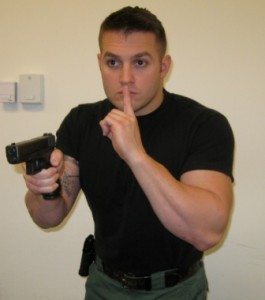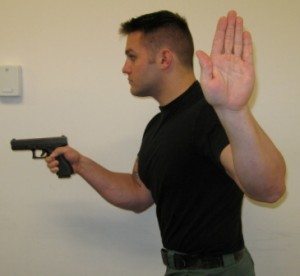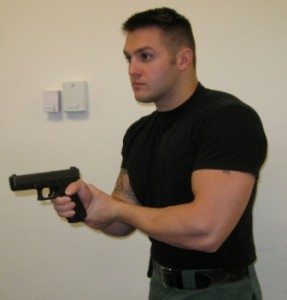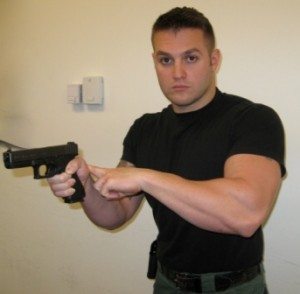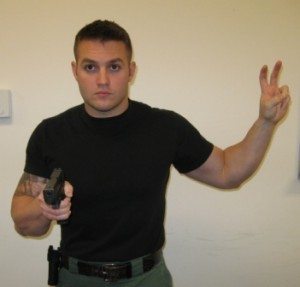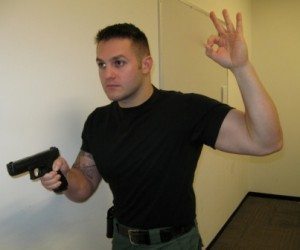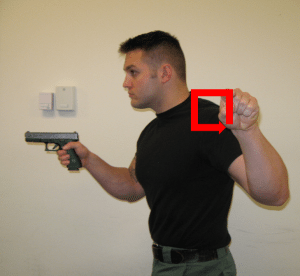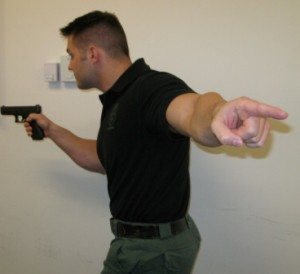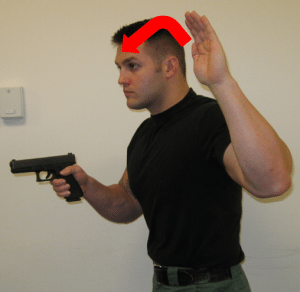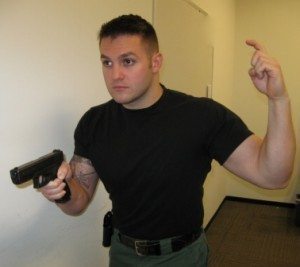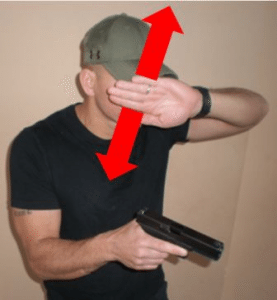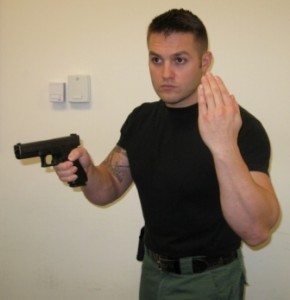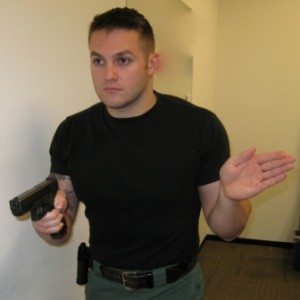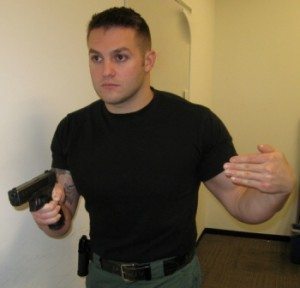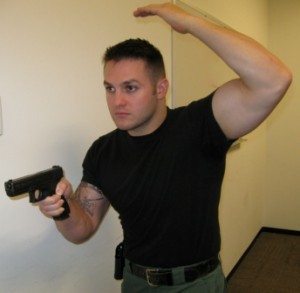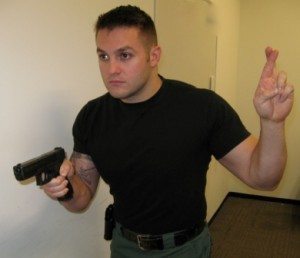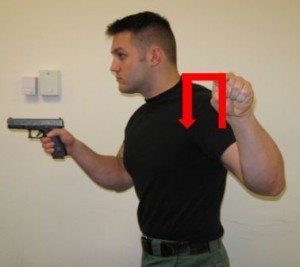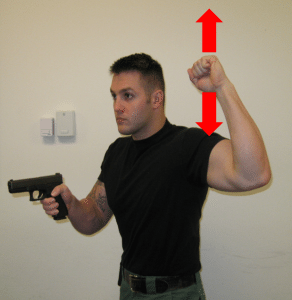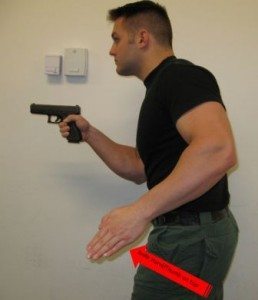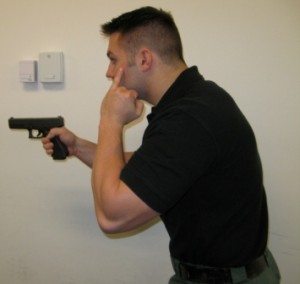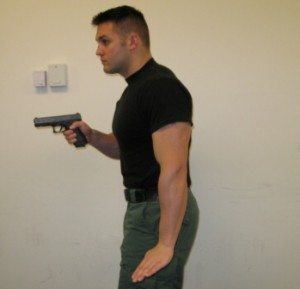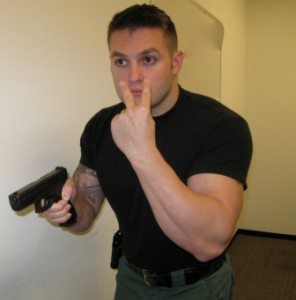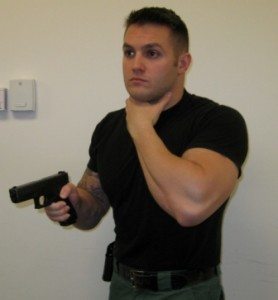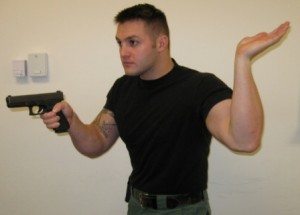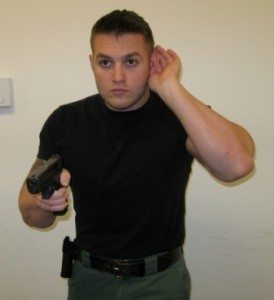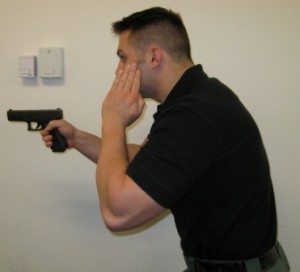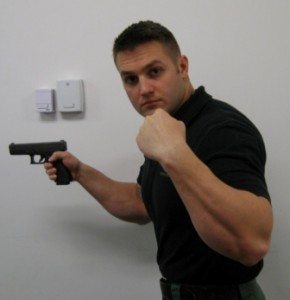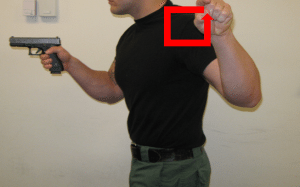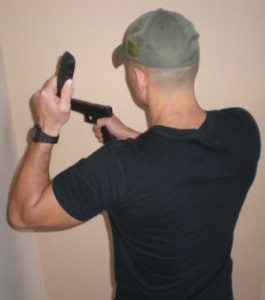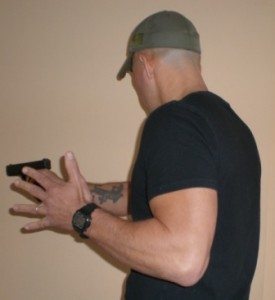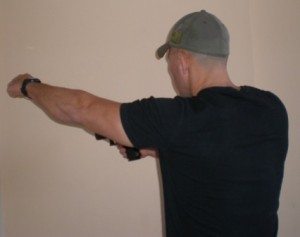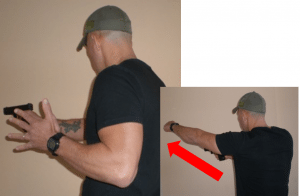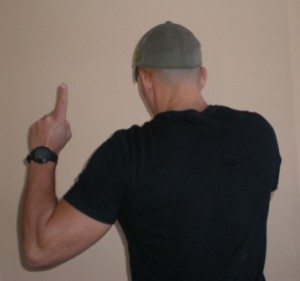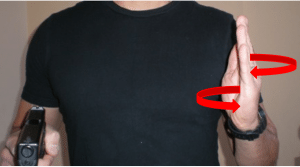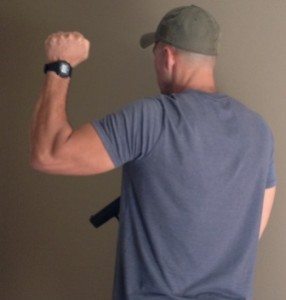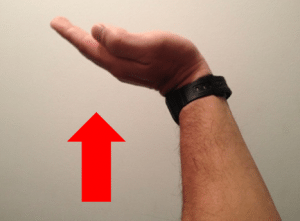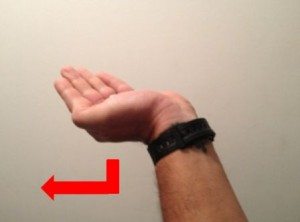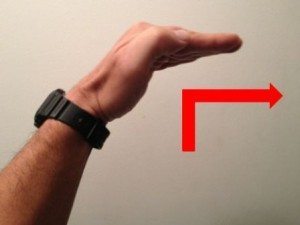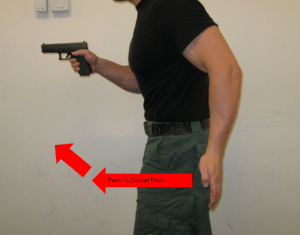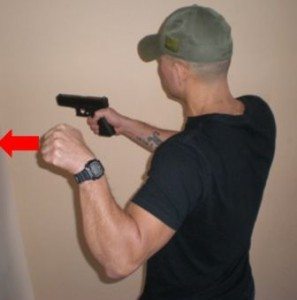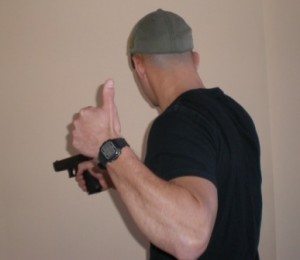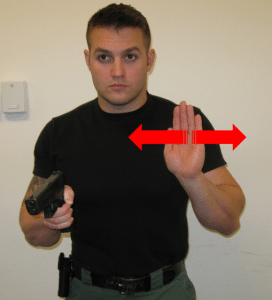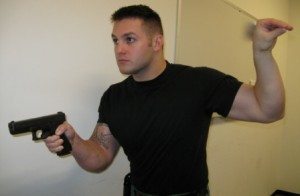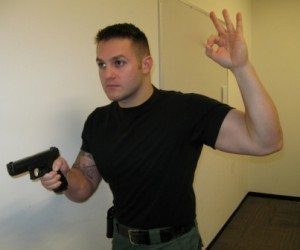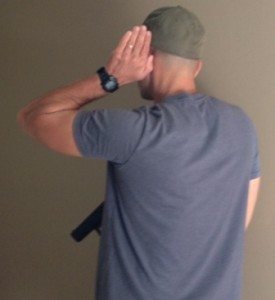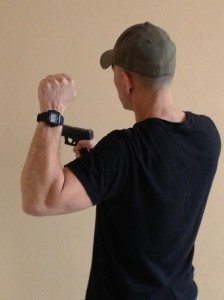“If we hadn’t a voice or a tongue, and wanted to express things to one another, wouldn’t we try to make signs by moving our hands, head, and the rest of our body?”
Socrates 5 BC.
In order for tactical teams to be effective in battlefield communications, they must have a shared understanding of what it is they are saying. Whether verbally or non-verbally, when teams communicate, they must do it instantaneously, clearly and decisively, thereby reducing hesitation and confusion. Therefore, communicating must be done without any ambiguity and the process of understanding one another must be worked out during team exercises. Practice reduces error making. You DO NOT want to learn how to remain undetected on the “battlefield”.
This is a basic introduction to hand signals and is not meant to be the final communications solution for tactical teams. It is meant for members who have never had exposure to alternative forms of communication and it provides one means of solving breakdowns in understanding.
Many tactical groups that have worked closely together do not rely on hand signals and if they do, it is kept to a minimum. You may perhaps use only 3 signals in your team. Some signals may be universal and can be used on deaf signalers and those who speak a foreign language in order to provide an easier means of controlling traffic by providing direction.
Communicate by Feeling
One of the basic ways team members move tactically as a group is to communicate by feeling. This is done by touch; Sensing the movement of your team mate. Team members who consistently work tightly in stacks and formations are able to match their cadence to the cadence of the partner positioned behind and in front of them and determine their direction of travel. In this manner there is greater mutual support through the mimicking of actions by pressing up to one another. Team members can still cover their sectors while simultaneously getting a read on whether their partner is moving left or right or has broken contact. Importantly, if a danger area is sensed, a simple pull on the shoulder or web belt can halt a partner from potentially moving into an adversaries line of fire.
Communicate by Speaking
Teams also communicate verbally. The primary concern when moving tactically is to do it stealthily. If members must talk, they should keep in mind to not vocalize their actions to an adversary! If you must verbalize, such as doing dynamic entry, still choose your words wisely in order to not telegraph your movements by saying something loudly such as, “I’m crossing left!”.
Communicate by Seeing
Teams also communicate visually. Team members are able to observe each others’ actions. Members can tell whether a member is speeding up, slowing down or even halting. Now the business of moving tactically as a team is difficult already, because members have to be in sync. And this becomes more difficult when you increase the numbers of members from a fire-team size to a squad or two squads or a platoon. The business of finding adversaries hiding inside of structures or hiding outside behind cover is no easy task. Add in distractions such as loud machinery, shouting, or gunfire and a serious injury or death could occur.
Communicate by ‘Talking’
Hand and arm signals are another form of communication to help teams share information and increase understanding of what needs to be accomplished. The importance in using hand and arm signals communications is to not rely on it solely as the one form of communication. Teams must learn to use all forms of communication in an interrelated manner depending on the circumstances. For example, you may find the need to use verbal communications if your partner is not responding to your hand signal.
Just like those who use sign language to communicate, you too must use the manipulation of your hands, arms or body as well as facial expressions to fluidly express what is in your mind and the actions you want perform. As described before, all forms of communication have limitations and downfalls. Poor visibility due to fog, smoke, bright lights, terrain etc. restricts a clear picture of the manipulator. Are you facing your partner or is your back turned to him? These facts alone should change the type of hand signal you present to him. Do not complicate matters by showing him a partial signal. Either be clear with its use or do not use it at all.
Misinterpretation can happen. There are hundreds of hand signals to choose from and many hand variations for the same word meaning such as, “I don’t understand.” The actual hand or arm signal is not important. What is important is that every team member clearly understands the particular information being put out! Whether it is talking or pointing or both done at the same time. Teams who practice together will be able to communicate better and maintain a better tactical advantage over their adversary.
Why Signals?
Here are some of the reasons to use hand and arm signals:
1. Helps teams communicate over near and far distances.
2. Helps small or large teams travel over terrain or through structures in a more organized manner.
3. Helps keep track of team members.
4. Helps teams to move stealthily when noise discipline must be maintained.
5. Helps teams move as a group even when noise discipline is no longer an issue, such as moving units over the sound of battle or when machinery noise is deafening.
In using hand and arms signals, note that you can use either your left or right hand. You may be carrying a pistol or a rifle. Your front may be facing your team or your backside. You may be in a stack to clear a room or in a wide formation preparing to cross a road. Find what works for your group. Although the hand and finger manipulations are the same universally the signals may not mean the same thing for every army or every law enforcement group.
Practice, Practice, Practice and then some…
There are roughly 50 signals commonly used by LEO’s and military units. A team really only needs a handful. Use whatever suits your needs. Individual teams may come up with signals that are unique to its members and can reduce what an observing adversary could intercept and decipher. You may want to use more but unless they are all remembered and practiced by each member, it’s best to keep it simple by using just a few.
The pictures below illustrate some of the many signals available to use and you can use your own. For our demonstration purposes, the pictures are very mechanical, but get the point across.
Work out your prearranged messages and good luck.
This article is not meant to be the solution or panacea for every tactical problem and much has been written about it already. Spotter Up will assume “no” responsibility for any use or misuse of information from this article. This article alone will not make the reader an expert in tactics or in firearms nor can it be used as a substitute for PROFESSIONAL TACTICAL TRAINING or WEAPONS TRAINING. Spotter Up advises you to visit our site for training courses with a certified instructor On ALL weapon platforms. Orginally posted in 2015.
Knife or Freeze images are repeated twice.
